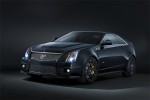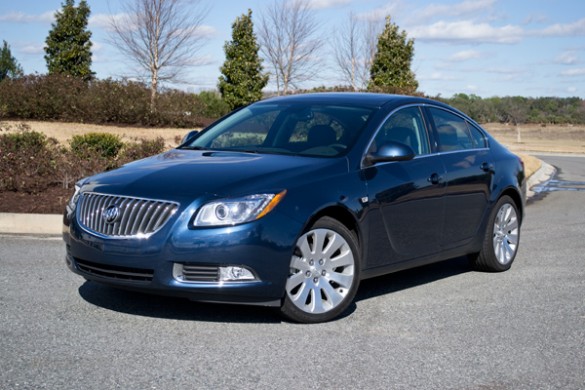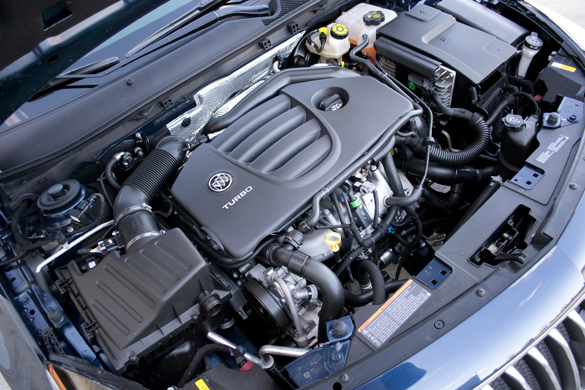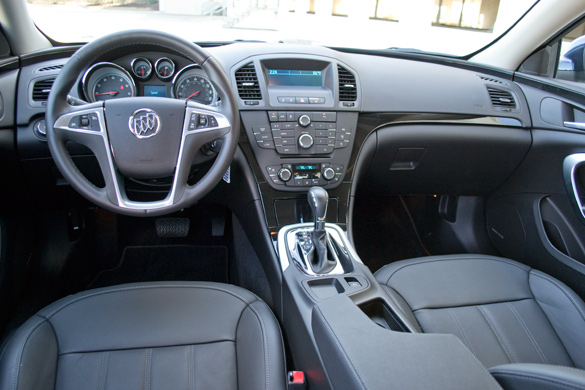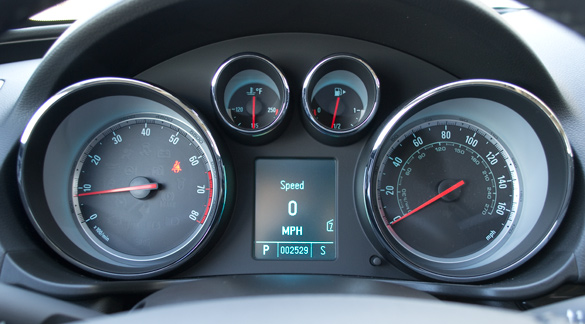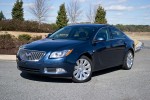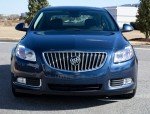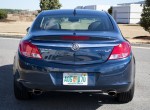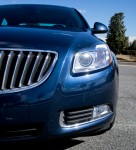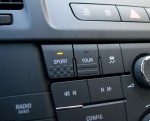Somewhere around the world, floating amid a sea of crystal-clear water, is a Hatteras 100 Motor Yacht. It is hardly an ordinary boat.
Built for long passages, with a sturdy sea-keeping fiberglass hull, the Hatteras offers unparalleled engineering, meticulous craftsmanship and immense power. Its staterooms feature exquisite wood cabinetry, double bullnose moldings, and polished natural stone countertops. The main salon is equipped with plasma video screens and multi-channel surround sound for entertainment, while the pilot house features state-of-the art digital electronics for monitoring systems and navigation. And under the stern deck, there are twin 16-cylinder turbo diesel powerplants generating 2,400 horsepower each. It's enough propulsion to move the 270,000-pound yacht through the water at speeds approaching 30 mph.
On open water, the 100-foot Hatteras is the ultimate expression of luxury and sport unequalled in its ability to project wealth and prestige. However, thirty percent of the world is land - with many a mile of paved road. All of which begs the question: What does an uncompromising Hatteras owner motor about in when they come ashore?
They drive their new Bentley Continental GT, of course.
Eight years later, the Continental GT has proven itself to be a massive success. While most automakers didn't rush to concoct their own $160,000 coupes in its wake, well-heeled customers gobbled the new Bentley two-door up so quickly that the factory in Crewe was unable to keep up with demand (Bentley sold 700 Continental GT coupes in the U.S. in 2004 - after selling only 400 Bentleys in total the previous year). To date, nearly 8,000 GT coupes have been sold, and a whole range of Continental sedans and dropheads has been spawned from the coupe, selling thousands more.



Last November, our man Paukert flew all the way to Oman to take a first drive in the 2011 Bentley Continental GT. We had good reason to make the voyage, as the British automaker had promised us a significantly updated four-passenger coupe. While the platform and engine remained essentially unchanged, there was all-new sheetmetal, new front and rear fascias, new interior and new technology throughout. The Middle East afforded us an exotic locale to test the Bentley, with equally spectacular scenery, but its fresh infrastructure and near-pristine roads were hardly a real-world testing ground.
Six months later and transported a full 8,450 miles around the globe, the very same vehicle we drove in Muscat was staring at us in Los Angeles - affording us an opportunity to run it on our familiar local roads.
A spotter's guide pointing out the differences between the "old" and "new" Continental GT would list the headlights as its first clue. In addition to their new staggered size, the freshened face wears "jeweled" design, with integrated LED running lamps circling each lens. A more careful look at the front facade reveals that the awkward horizontal seam bisecting the headlights in the predecessor (between the urethane lower bumper and sheetmetal above) is now gone - credit the new "Super Formed" aluminum bodywork that allows the sharply creased fenders to envelope the headlights in lightweight alloy. At the side, the greenhouse is shorter (the doors are taller) and there are new mirrors. At the rear, the tail lamps and exhaust outlets have both been flattened and the reverse lights have been lowered cleanly into the bottom fascia. The overall look is classy, strong and muscular. It is decidedly more masculine.




The interior, on the other hand, is now softer and more inviting. The primary controls, instrumentation and dash vents have not moved, but they are now more cleanly integrated into the rich woods and soft hides around them. Most now wear bright metal bezels. A new eight-inch touchscreen display powered by VW-sourced architecture highlights the center console (it couldn't come soon enough – the outgoing unit was one of the most dated facets of the old car). The steering wheel is freshened and the pedals resculpted. There's even significant news with the seats. Last year's behemoths have been replaced with thinner and lighter "cobra-design" seats, with the seat belt anchors affixed to the chassis instead of the seats.
Our revisited test vehicle wore a thick layer of hand-applied Orange Flame paint over Imperial Blue leather (with contrasting stitching and embroidering in orange thread). The point of entry for a 2012 model is $189,900, but with the amount of options and Bentley's in-house bespokery, Mulliner, few will ever leave Crewe's gates at such a price. The major options on our coupe included the Naim for Bentley Premium Audio System with CD changer ($7,015), Convenience Spec Package with adaptive cruise control, cordless mobile handset, rear view camera and valet key ($4,140), massaging and ventilating seats ($820), removable veneered sunglasses case ($550) and deep-pile floor mats ($380). Our grand total? $203,940 - only slightly more than the standard electronics allowance for outfitting just the pilothouse of the Hatteras 100 Motor Yacht. (Check out the dashboard in the Short Cuts video below, with our apologies for citing the incorrect model year).
The cabin of any late-model Bentley, like the cabin of a $10 million custom yacht, is a wonderful place to watch the surface of the earth slip by. The interior is upholstered with yards of wonderful soft-touch leather, and only the finest wood veneers and polished cool-touch metals are visible. All controls and switchgear operate with a solid feel, and everything just feels rich. The two new 'Cobra' front seats are comfortable, supportive and chock full of adjustability. In addition to variable seat heating, cooling, lumbar and massage settings, the cushions under the thigh unroll to present a seamless extension of the bottom part of the seat cushion. Regardless of stature, there is generous head, shoulder and leg room for both front passengers. And, thanks to a lack of B-pillars, outward visibility isn't too bad, with special compliments owed to the oversized exterior mirrors.
The story isn't as dandy for those occupying the two rear seats, sadly. Even though the appointments are every bit as opulent as those up front (minus the massage and cooling functions), there remains little room for human anatomy below the knee. Unless fellow passengers share the bulk of their DNA with Flat Stanley or the front seats are moved far forward, nobody will enjoy sitting back there for long.
But forget about those rear seats – you won't be sitting back there, anyway. Open the hood. Shoehorned up front is the familiar twin-turbocharged 6.0-liter W12. With keyfob in pocket, it starts at the push of a console-mounted button and immediately settles down to a muted growl. Carried forward from last year but massaged for 2012, the engine gains a bit of power compared to its predecessor. This year's output is 567 horsepower and 516 pound-feet of torque - would seem to be enough power to pull ships through the Panama Canal Locks. The Conti's standard transmission is a ZF-sourced six-speed automatic, also tweaked for the new model year to deliver quicker shift responses and double-downshift capability to improve passing times. All-wheel drive returns, but the torque split has been changed from 50:50 (front-to-rear) to 40:60 for better feel and more rear-wheel drive mannerisms.
Even with a curb weight of 5,115 pounds (143 pounds less than last year's model), the Bentley Continental GT seriously scoots when prodded. Stomping the accelerator pedal to the floor instantly awakens each and every horse, and the two-door leaps forward with a pounce that belies its mass (0-60 is about 4.4 seconds and this Bentley doesn't run out of steam until nearly 200 mph). Despite the firepower under the hood, the noise emanating from the powertrain is muted and unique (it reminded us of the signature sound the wing-mounted engines of the old Lockheed L-1011 "TriStar" would make under take-off power). We wanted, and expected, more audible anger from the powertrain, but we'll have to wait for the inevitable Supersports variant.
While a sub-five second sprint to 60 mph is commendable, don't get the impression it was entirely engaging in the process. All-wheel drive prevented any wheelspin and sapped some of the fun in the process, and there was a tiny bit of lag off the line (maybe just to break inertia?). We don't need to remind everyone that two-and-a-half tons is a lot of car. Point-and-shoot in traffic took anticipation, but once the engine got steam, everyone was wise to get out of our way. Thankfully, the massive disc brakes were more than up to the task of deceleration.
Bentley's Continuous Damping Control (CDC) air suspension adjusts itself several hundred times per second, giving the coupe multiple personalities. The system lowers the car at higher speeds to improve stability and can be manually activated to raise the vehicle to clear steep driveways. While it works automatically, suspension damping may also be customized via settings on the touchscreen. Acceleration and braking aside, when it comes to ride quality, mass is the big coupe's best friend. Nothing short of a giant sinkhole seemed capable of diverting the trajectory of the moving Continental GT.




Purely out of curiosity, we took the big coupe up one of our favorite canyon roads for some calisthenics. It was surprisingly capable, and the power and grip are there (optional P275/35ZR21 Pirelli P-Zeros at all four corners), but it really isn't entertaining to chase lightweight sports cars in something so massive. The Bentley will carve a canyon every bit as well as the Hatteras 100 Motor Yacht will pull a water skier, but neither is really the proper tool for the job.
Much greener pastures were found on California's open thoroughfares, when our two-door was able to stretch its legs and settle in for the cruise. The ride was spectacular, with whisper-quiet noise level in the cabin. Thick, double-pane laminated side glass and generous sound-deadening materials ensured that we were isolated from all reality outside – the glass goes some way to explain why one doesn't hear more from the powertrain. We piloted the Bentley through an hour of horrendous traffic in the LA Basin's dreaded Sepulveda Pass (under major construction), and emerged more relaxed and rested than when we had departed. That's impressive.

Bentley Continental GTs, like Hatteras Motor Yachts, cannot be measured with a standard yardstick. In the real world, the Bentley sucks at fast-food windows (maneuvering a wide car through tight lanes becomes a challenge), it makes a lousy grocery transport (milk cartons roll unrestricted around the smallish trunk), it isn't competent with carpools (children have a difficult time opening and shutting its massive doors), it attracts unwanted attention in Walmart parking lots (far too many strangers asking questions about the car) and it binges on premium unleaded fuel (one more gallon was consumed while you read this paragraph).
But, who are we really kidding?
Bentley owners don't drive-through Taco Bell, shop for groceries or run soccer carpools - that's what personal chefs, housekeepers and nannies are for. They let valets open heavy oversize car doors, park in tight spaces and let others fill the fuel tank. And, for the record, there is no such thing as, "too much attention."

Comparing the Bentley Continental GT to a Hatteras 100 Motor Yacht isn't much of a stretch. Both serve a very rarefied segment of the market, both offer immense power for their class, both deliver an underlying sporty demeanor and both are individually customized to exactly what the buyer desires - the more bespoke, the better.
Bentley is the first to admit that most of its customers have multiple parking spaces in their garages with other high-end vehicles from Porsche, Aston Martin, Mercedes-Benz, Ferrari and Rolls-Royce all rubbing fenders. Not burdened with having to find one vehicle for all occasions, this discerning class of affluent owners seeks much more than mere transportation. An automobile must be elegant, aesthetically appealing, exude prestige and it must quench ego. Against those measurements, there is no denying that the freshened 2012 Bentley Continental GT is up for a coveted space in the garages of the wealthy, and with its breadth of talents, we wouldn't be surprised if the Conti is the car they drive to the office more days than not.


 12:34 AM
12:34 AM
 Admin
Admin












